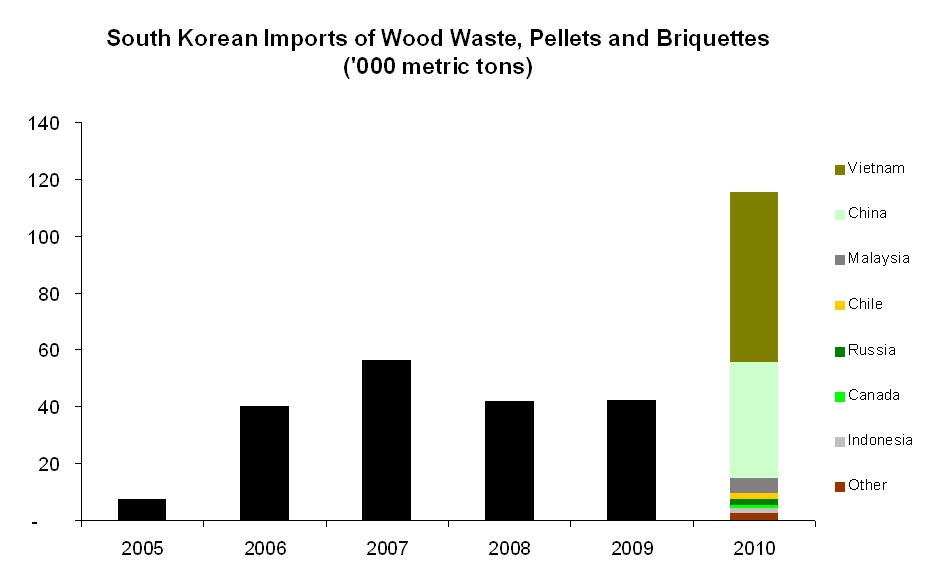South Korea aims to become a major player in internationally traded biomass over the next decade. Its renewable portfolio standards have legislated that 2 percent of the country’s energy come from renewable sources in 2012, to be raised incrementally each year until reaching 10 percent in 2022. Additionally, 350 of the country’s largest firms have been instructed to reduce their emissions of carbon dioxide. The policy will supplant the current feed-in tariff scheme currently in effect.
The new standards are expected to greatly increase South Korean biomass imports, including wood pellets. Demand could potentially hit 2 million metric tons by 2015 and 10 million metric tons by 2022. In fact, the shift toward the increased utilization of biomass in the country could already be seen in 2010, as greater volumes of woody materials and pellets were sought from nearby trade partners China and Vietnam.
Elsewhere, Plantation Energy—an Australian producer—has planned to deliver over 1.5 million metric tons to the Asia Pacific region by 2013-2014. Canada had already exported 50,000 tons of pellets to South Korea as of July 2011. Canadian pellets from Biomass Secure Power Inc. will reach the Korean market beginning in 2012, as it has signed an agreement with LG International to provide 1.25 million tons of the biomass fuel per annum.
In future LG International may also send pellets to its home country from the forest land it has obtained in Indonesia. In 2009, in conjunction with the Korea Forest Service, the company obtained 200,000 hectares in Kalimantan, Indonesia. The site will eventually produce both wood pulp and pellets.
Another South Korean company, Eco-Frontier has followed suit. In May of this year, the company struck a USD 60 million deal with state-run PT Perkebunan Nusantara in Indonesia toward the development of biomass energy sources.
Currently, most pellets are burned for residential heating in South Korea. In 2007 150 boilers were installed, a number which has since risen every year to reach 4,000 in 2010. And just last year, commercial greenhouse operators began using pellets for heat.
However, the real future for pellet consumption may reside in cogeneration. South Korea’s 12 utilities are also subject to the renewable portfolio standards. The country’s first industrial-sized boiler was ordered by in May of this year for the Donghae biomass power plant scheduled to come online in the second quarter of 2012.
The utilization of biomass energy in South Korea is still nascent, but its vast potential and international focus will make it a market of great interest for globally minded biomass companies in years to come.

